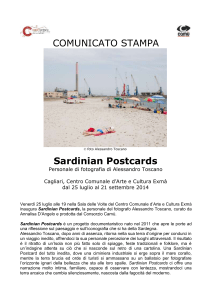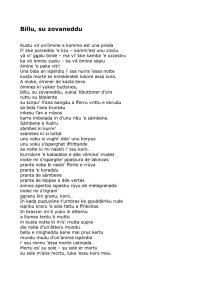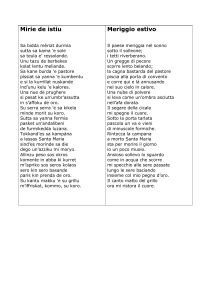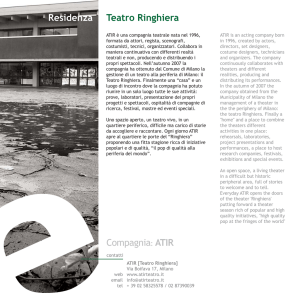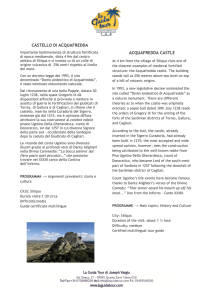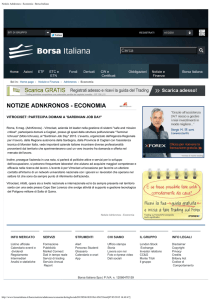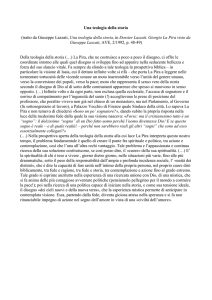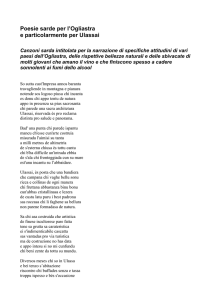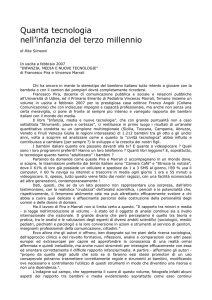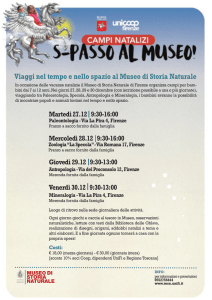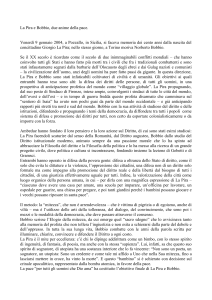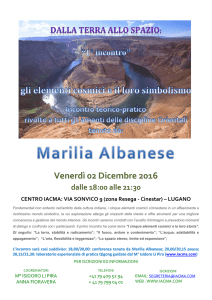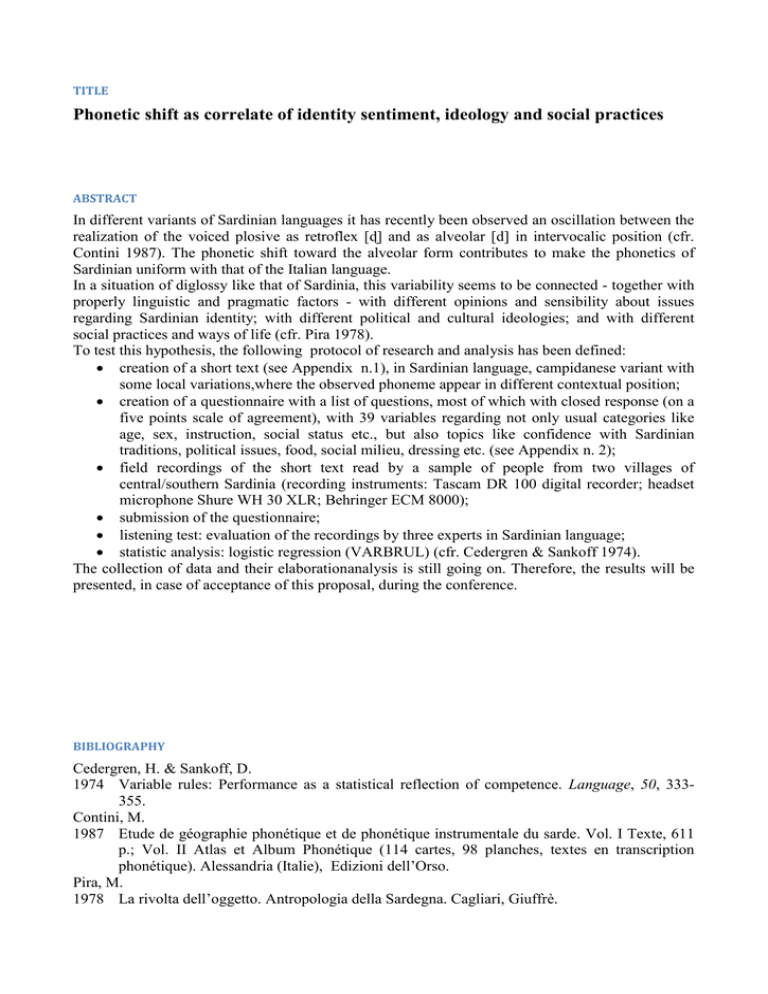
TITLE
Phonetic shift as correlate of identity sentiment, ideology and social practices
ABSTRACT
In different variants of Sardinian languages it has recently been observed an oscillation between the
realization of the voiced plosive as retroflex [ɖ] and as alveolar [d] in intervocalic position (cfr.
Contini 1987). The phonetic shift toward the alveolar form contributes to make the phonetics of
Sardinian uniform with that of the Italian language.
In a situation of diglossy like that of Sardinia, this variability seems to be connected - together with
properly linguistic and pragmatic factors - with different opinions and sensibility about issues
regarding Sardinian identity; with different political and cultural ideologies; and with different
social practices and ways of life (cfr. Pira 1978).
To test this hypothesis, the following protocol of research and analysis has been defined:
creation of a short text (see Appendix n.1), in Sardinian language, campidanese variant with
some local variations,where the observed phoneme appear in different contextual position;
creation of a questionnaire with a list of questions, most of which with closed response (on a
five points scale of agreement), with 39 variables regarding not only usual categories like
age, sex, instruction, social status etc., but also topics like confidence with Sardinian
traditions, political issues, food, social milieu, dressing etc. (see Appendix n. 2);
field recordings of the short text read by a sample of people from two villages of
central/southern Sardinia (recording instruments: Tascam DR 100 digital recorder; headset
microphone Shure WH 30 XLR; Behringer ECM 8000);
submission of the questionnaire;
listening test: evaluation of the recordings by three experts in Sardinian language;
statistic analysis: logistic regression (VARBRUL) (cfr. Cedergren & Sankoff 1974).
The collection of data and their elaborationanalysis is still going on. Therefore, the results will be
presented, in case of acceptance of this proposal, during the conference.
BIBLIOGRAPHY
Cedergren, H. & Sankoff, D.
1974 Variable rules: Performance as a statistical reflection of competence. Language, 50, 333355.
Contini, M.
1987 Etude de géographie phonétique et de phonétique instrumentale du sarde. Vol. I Texte, 611
p.; Vol. II Atlas et Album Phonétique (114 cartes, 98 planches, textes en transcription
phonétique). Alessandria (Italie), Edizioni dell‟Orso.
Pira, M.
1978 La rivolta dell‟oggetto. Antropologia della Sardegna. Cagliari, Giuffrè.
APPENDIX n. 1
Unu dia, unu piccioccheddu, giranno a caddu aintro „e boscu, atòppada unu sirbone. Custu sirbone cummènzada a
foeddare cun issu e di nàrada:
- “Ite olise de me1, piccioccheddu? Deo seo leggiu, seo totu nieddu e caddozzu e no bàglio a nudda; poite no
ànnasa a cassare incui, anca este cuddu polceddu, du sparasa e di faese unu stampu in cussa bella pedde groga!”
Su piccioccheddu, intennendo custos fueddos de su sirbone, si spantada e si fuidi. Torrau a bidda, atòppada sa mamma
ci2 di narada:
- “Inue fiasa a giru cun cuddu3 cuaddu? No sese annau a iscola? Como istudanne su fogu, e piga s‟iscova e
illichidi. E luegu beni babbu a t‟iscutere!”
APPENDIX n. 2
Two short excerpts from the questionnaire submitted
1
2
3
Varianti: per alcuni, “de mimi” o “de mei”
Varianti: per alcuni: “ji di narada”
Varianti: alcuni: “cussu caddu”

